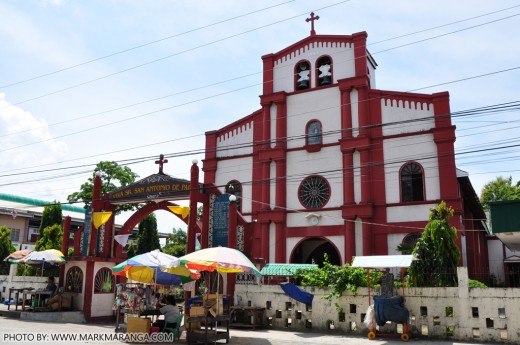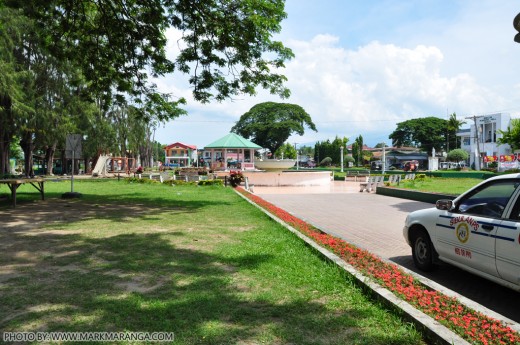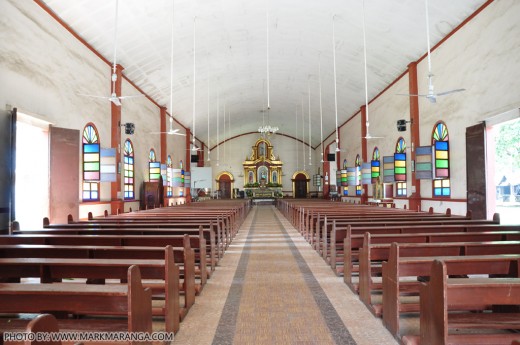Situated in the town center of Sibulan in Negros Oriental, the simplistic-looking San Antonio de Padua Church welcomes the tourists to the small and peaceful municipality. About two kilometers north of the Dumaguete Airport, Sibulan is one of the many municipalities in the country that is base from Spanish ideas – the Municipal Hall is near the park, churches, schools and trading centers.
The bell gabled San Antonio de Padua Church built in 1953 is an example of a simple romanesque architecture. Its architectural element crowning at the upper end of the wall of the church has a couple of bells in lieu of a church tower. It consists of a gable end in stone, with small hollow semi-circular arches. The facade has a statue of San Antonio de Padua housed inside a glass. It also has a couple of windows, a floral ventilation design and the main door. The design of San Antonio de Padua Church in Sibulan makes the church unique – different from most old churches found in the country, which are base on Baroque-Rococo structure.
According to Wikipedia, Anthony of Padua is a Portuguese Catholic priest and friar of the Franciscan Order. Though he died in Padua, he was born and raised in a wealthy family in Lisbon. Noted by his contemporaries for his forceful preaching and expert knowledge of scripture, he was the second-fastest canonized saint (after St. Peter of Verona) and proclaimed a Doctor of the Church on 16 January 1946.
In front of San Antonio de Padua Church in Sibulan is the town’s park, where the police station, Sibulan Central School, covered auditorium, United Church of Christ in the Philippines (UCCP) are located. To the west is Sibulan’s public market, where fresh fishes, vegetables and other goods are available.
Also known as Sibulan Church, the San Antonio de Padua Church is formed like a cross if you view it from the top. There are regular masses in the morning and afternoon and several mass schedules on Sundays.
This page is last updated on



 Mark Anthony Maranga is an Educator-Parent to his 3 Homeschooling Kids. He sells
Mark Anthony Maranga is an Educator-Parent to his 3 Homeschooling Kids. He sells 









